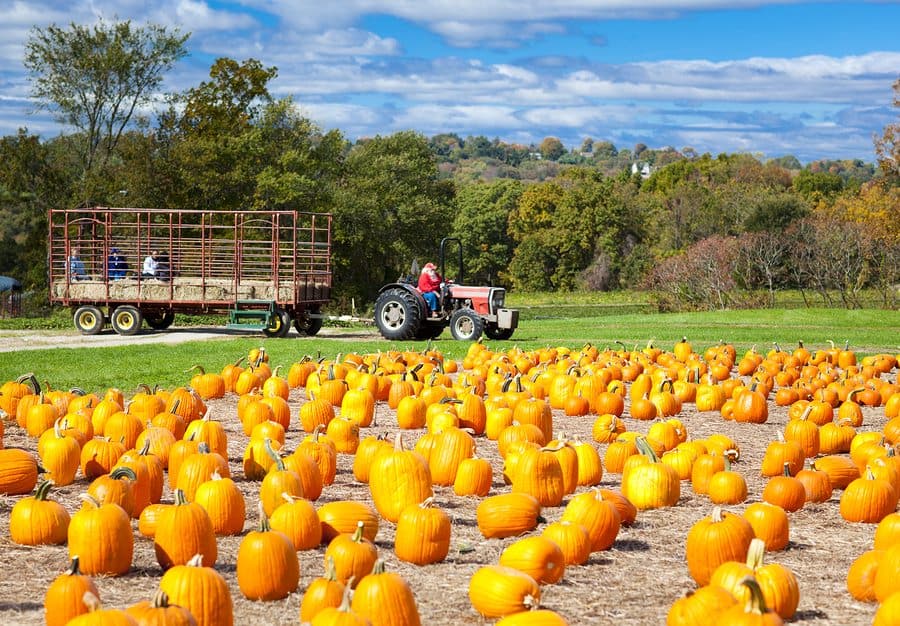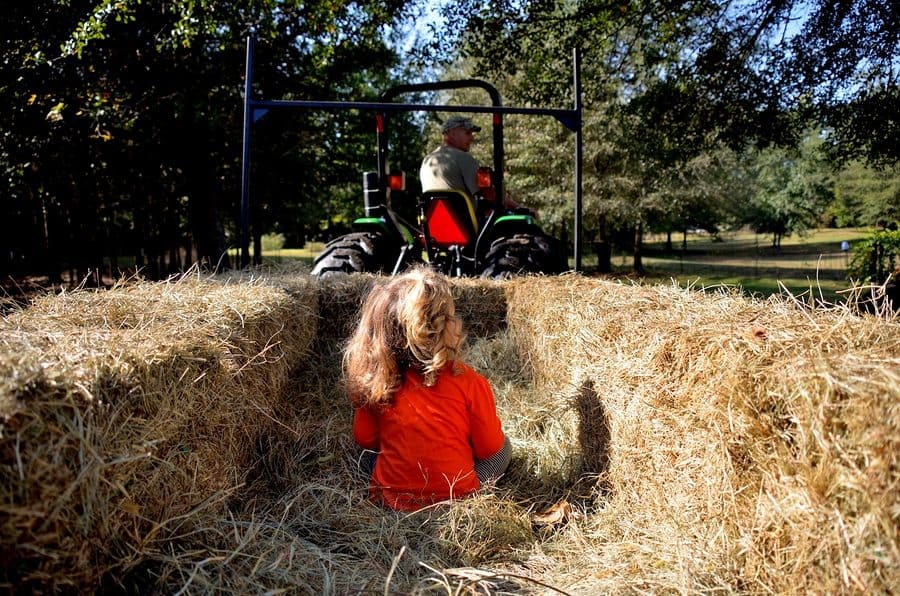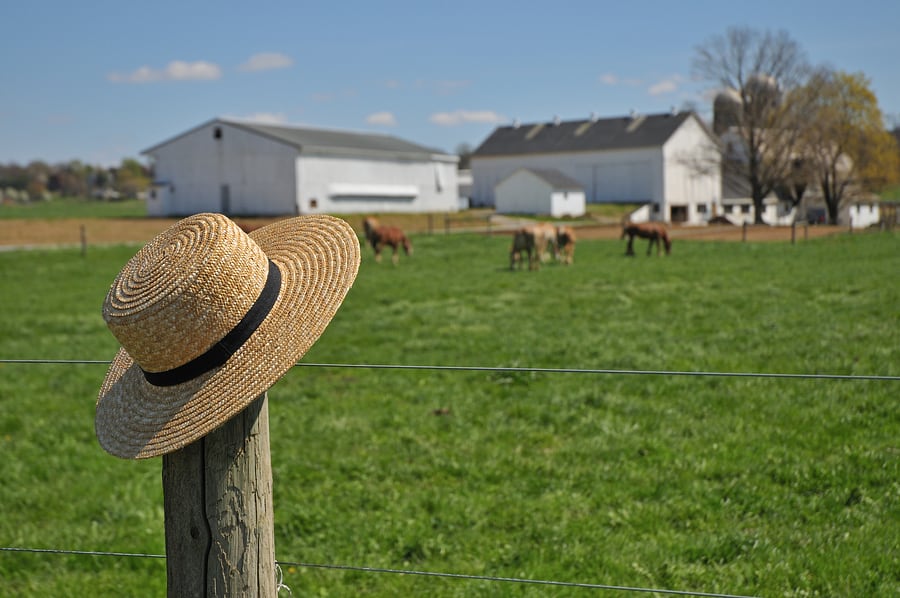Many children, teens, and families look forward to the fall to participate in a variety of harvest activities. While some individuals may favor traditional fall activities like apple or pumpkin picking, other people are looking for additional thrills. Many farms, orchards, dairies, and other agricultural facilities have recognized that there is a steady demand for attractions like frightening hayrides and haunted houses. Thus, many farms in Pennsylvania, New Jersey, and throughout the United States have scrambled to ramp up agritainment offerings to the public.
Unfortunately, as many of the tragic accidents below indicate, some hay rider operators cut corners on safety.
Causes of Hayride Accidents
While it is certainly a positive development in the sense that this additional stream of revenue should result in more viable farms, certain risks also exist. One of the most concerning risks is that farms and other facilities will not invest the time and effort needed to tailor their operations to particular safety risks that come with offering rides to the general public. Unfortunately, this risk is compounded by the fact that hay rides are not regulated like most people would expect. Here are some of the most common causes of hayride accidentd:
Inadequate Equipment Being Used
All too often it seems as though farms do not fully consider the fact that people who ride hay rides have different safety needs than bales of hay or other inanimate cargo. For instance, non-living cargo may be able to be hauled safely using a wagon with low or no sidewalls, no seating, and no lights or other safety features. However, a wagon carrying human riders would need to be significantly modified to meet reasonable safety standards.

For instance, wagons that have distinct, assigned seating and safety restraints are significantly less likely to have incidents. The defined seating ensures that weight is evenly balanced in the wagon and reduces the risk of a rollover accident. The seat belts will not only restrain passengers in the event of an accident or incident but also will discourage individuals from standing while the ride is in motion. Furthermore, wagons that are equipped with high sidewalls of at least 2 feet in height and safety chains significantly reduce the risk of an accident.
Another concern is the tractor or truck that is used to pull the wagon. If a Jeep or pickup truck is being re-purposed to haul a large wagon, there is a high likelihood that the farm has not fully considered all foreseeable safety risks. Consider the fact that in the Harvest Hills hayride accident a 1979 Jeep was used to haul the trailer. This Jeep has a known greater than average rollover risk and was grossly inadequate to tow the weight of the wagon. Generally speaking, farms should only utilize rollover protection structure (ROPS) equipped tractors with a minimum 75 horsepower for hay rides.
Failing to Account for Loading and Unloading People of all Ages
One sign that a farm may not have fully considered all safety risks is often evident in the facility’s approach to loading and unloading guests from the hay ride. As most experienced ride operators are aware, the loading and unloading phase is one of the riskiest periods where numerous things can go wrong. Therefore, most ride operators will take steps to minimize the risks during the phase of the ride.
One of the most effective ways farms can address the risks presented by loading people into a wagon is to avoid loading and unloading from a surface that is not level with the wagon floor. When guests are forced to climb up into the wagon or jump down from the tailgate, the risk of injury increases significantly. Ideally, guests will board from a platform, with handrail, that is level to the wagon floor. Alternatively, steps that allow the guest to board the wagon on a level plane can also be used to minimize the risk during loading and unloading of the wagon. Accounting for risks during the loading and unloading phase, including mobility impairments that guests may have, is a key step in preventing hayride accidents.

Inadequate Safety Policies and Procedures
Another risk that some farms have difficulty adjusting to is tailoring policies and procedures to ensure the safety of the general public. While many farms can go years without an accident in core agricultural activities, providing rides to children and members of the general public requires a different approach to safety. Farms and agricultural facilities that recognize and prepare for these challenges frequently provide for safer operations.
For instance, all staff members involved in hay ride activities should be provided with safety training specific to the farm’s operations. This should include training regarding loading and unloading procedures, the operation of the tractor, what to do in the event of an incident, and many other safety concerns. Furthermore, facilities should engage in routine drills so that response to accidents or incidents are not delayed by uncertainty. Other signs a parent or caregiver can use to assess whether considerations paid to operations are sufficient to include whether signs of facility rules are posted, if the queuing area is orderly, and if staff members frequently patrol and enforce safety rules.
“Jackknifing”
While all of the facts and details are not entirely clear, one can weigh the likelihood of a number of scenarios based on what we do know. In the recent Maine accident, one can imagine a heavily loaded trailer as officials pegged the number of riders at about 30. We can also consider that it is likely that the payload and weight limitations were exceeded based on an average occupant weight of 100 pounds. We also know that the Jeep and tractor were being operated on a steep embankment. Finally, we know that the Jeep had missed a turn and the driver was likely attempting to backtrack. Although the driver claimed that he had a mechanical problem with the Jeep, I suspect that what we really have at work here is the tail wagging the dog, that is, a loss of control when the driver realized his mistake and attempted to compensate –possibly exacerbated by the vehicle type, age, and load being towed – that resulted in a jackknifed trailer that careened into a tree.
I would also be curious to know whether or not the vehicle being towed had dual wheels and a secondary braking system. These safety features can prevent situations like these thereby preventing needless tragedy. The police investigation, expected to be completed on Monday or Tuesday of this week, should also reveal additional information regarding the characteristics of the vehicle and whether a mechanical defect occurred.
Profitability of Hayride Trailers Emphasized over Safety?
In many of our cases, we have noted that most of the trailers are made to be just under the gross weight of 3000 lbs. so as not to be subject to any regulations. Yes, even homemade trailers are allowed in almost all states. All that most states ask is that the lights are working at the time of registration and very few states check the quality of construction. There is currently no federal law or national agency requiring amusement park operators and hayride operators in every state to fill out accident reports. There are no general uniform reporting requirements on a national level for amusements or hayride injuries and fatalities. Since the hayride and quasi-amusement industry is highly unregulated, there is no uniform system for reporting injuries. this presents a serious danger to the consumer particularly when these rides carry the most precious of cargo: our children.
State Fire Marshals inspect and license mechanical amusement rides in Maine, but hayrides do not require such licensing. At the time of this writing, we have been informed that a State Fire Marshal is inspecting the trailer and interviewing farm employees and the injured riders. State Police are inspecting the SUV that was hauling the flatbed.
A tragic fall hayride accident has taken the life of one 17-year-old child and critically injured a 16-year-old child. The accident occurred at Harvest Hill Farms which bills itself as New England’s premier agritainment destination featuring Pumpkin Land, a seasonal Halloween-themed venue with a corn maze and pick your own pumpkin. There were approximately 500 visitors at the farm when the accident occurred and six different hayride trailers with six different drivers were working.

As an attorney who has been prosecuting hayride, amusement accidents, and vehicle rollovers for over three decades, I remain concerned that while the Consumer Product Safety Commission has estimated that the number of serious injuries and deaths from hayrides has risen dramatically. And yet, there is little or minimal regulation to improve safety and prevent accidents. Unfortunately, the regulation and inspection of amusement rides, including hayrides, is left up to state or local municipalities and as a result, many hayride operators are not regulated at all. If proper control mechanisms and regulations are not in place, hayride events are often accidents waiting to happen.
Is a Lack of Oversight Creating a Nationwide Race to the Bottom for Safety?
The more concerning fact remains when we consider that there is no state regulation or government oversight of haunted hayrides in Maine and many other states. Unfortunately, in most states, including the Commonwealth of Pennsylvania where I live, very little regulation is addressed with regard to hayrides and trailers that are less than 3,000 lbs.
In fact, The Motor Vehicle Code of Pennsylvania exempts many trailers and only requires that brakes be inspected beyond the initial confirmation of a VIN plate. Many state laws, including the Commonwealth of Pennsylvania and Maine, are silent as to any design or construction specifications for those vehicles or for towing chains or hitches. In most of the cases we have investigated, we found that tow trailers, including hayrides, have obvious safety violations relating to lighting, braking, and inspection requirements.
Furthermore, over our years of practice, we have found that many trailers are made just to be under the gross weight of 3,000 pounds so as not to be subject to regulations. And yes, even a homemade trailer is allowed with the only concern in most states being whether the trailer’s lights are working at the time of registration. What this means is that very few states consider the quality of construction.
Unfortunately, many hayride operators continue to cut corners on safety and properly staffing the loading and unloading positions of the rides. Often these vehicles are brought to short, jerking stops which can cause occupants to be thrown from the rides. In other instances, drivers may accelerate or brake abruptly to increase the thrill factor of the experience. However innocent children can be thrown from the ride and possibly under the tires. Many times our investigations revealed that hayride operators are simply not paying attention to the precious cargo on the ride and many of the drivers are temporary employees who may have questionable backgrounds that were not carefully screened out.
Furthermore, and perhaps most shockingly of all, because no federal law or national agency requires amusement park operators or hayride operators to file an accident report, there are no general, uniform reporting requirements on a national level for amusement or hayride injuries and fatalities. Since the amusement and hayride industry is highly unregulated a serious death of information exists when it comes to amusement park and hayride accidents and injuries. This means that the most precious cargo of all, innocent consumers and children, are often left in the dark about the risks and past accidents operators have been involved in. What this means is that consumers cannot be reasonably expected to guard their own safety or select a safer operator for their family because the information is not available.
What is a Reincarnated Motor Carrier?
A reincarnated or affiliated motor carrier is sometimes referred to as a chameleon carrier. While one may operate more than one motor carrier for many reasons, one may not do so to avoid FMCSA action or regulations. A reincarnated carrier is 2 or more commercial motor carriers that attempt to hide or mask their non-compliance or a history of non-compliance through a scheme involving common ownership, common management, common control, or a familial relationship. The reasons for non-compliance can vary, but generally, the employment of strategies like these are to avoid out of service orders, civil penalties like fines, and other consequences of failure to comply. Section 385.1007(a) of the Federal Motor Carrier Safety Administration (FMCSA) permits the suspension or revocation of registration if, “motor carrier or motor carriers have reincarnated or affiliated to avoid regulatory compliance or mask or otherwise conceal regulatory noncompliance, or a history of noncompliance.

Examples of Hayride Accidents and Injuries
An Overturned Hayride Being Pulled by a Jeep
According to news sources, Sheriff Guy Desjardins stated that the fatal hayride accident occurred at approximately 8:30 p.m. when the driver of the Jeep pulling the hayride trailer near a “haunted house” at the top of the hill missed a right-hand turn and went off of the steep dirt road. Straying from the dirt road caused the tractor to jackknife and overturn. Desjardins further noted that he had never seen a single incident that resulted in so many injuries. As many as 12 ambulances and life flight helicopters were required.
Although the farm has been operating the hayride for at least five years and has never had an accident, sources in Maine indicate they are not aware of any regulations for hayrides and the amusement or quasi-amusement did not require a license. This is chiefly because most hayrides involve the use of a trailer attached to a tractor or truck pull and NHTSA has admitted that no standards exist for trailer hitches. Unfortunately in most states, very little regulation addresses hayrides and trailers that are less than 3,000 lbs.

Examining the Jeep and Accident Circumstances
I would be curious to learn the Jeep manufacturer’s classifications and specifications for towing weights and payload. At first glance, it would appear that there is a possibility that the gross weight of the fully loaded flatbed combined with the weight of the flatbed exceeded proper and safe towing guidelines. A cursory review of published statistics and guidelines for a 1979 Jeep CJ5 indicated that it is an open off-road sport utility vehicle (SUV) with a soft top and curbside weight of 2,740 lbs. The vehicle has an estimated payload of 1010 lbs. and towing weight of 2,000 lbs. (braked). The gross vehicle weight rating is 750 lbs. All of these factors take into account that the vehicle is in proper operating condition with properly sized and inflated tires. Additionally, I would be curious to know whether or not there was a secondary or emergency backup braking system to the trailer being pulled and whether or not the trailer was dual wheeled or single wheeled. Research and studies have shown that dual wheels greatly reduce the possibility of a rollover in a sudden emergency or accident avoidance maneuver.
Unfortunately, the dangers present at hayrides are not limited to the actors dressed in ghoulish costumes attempting to scare the daylights out of riders. The real dangers lie in defectively manufactured, designed, and maintained trailers that are normally covered with hay and blankets and often overloaded as they carry unsuspecting hay riders.
A Company Involved in a Fatal Hayride Accident Had Nearly 200 Safety Violations
The fatal October 11th hayride accident that claimed the life of 17-year-old Cassidy Charette and injured 22 others has received extensive press coverage. In fact, The Reiff Law Firm attorney, Jeffery Reiff was called upon by NBC news to provide insight and legal analysis into the causes for the tragedy and its likely consequences. New revelations revealed through public documents obtained by the Sun Journal, a local Maine newspaper, provide some insight into our concerns about how diligent the farm was in maintaining their equipment and their concern for safety. It is important to realize that this information can show a pattern or course of dealing, but it is not definitive proof of the events that occurred that evening. However information of this type can show that certain conduct is likely due to habit or established business practices.
Recycling Company Owned by Harvest Hill Cited for Nearly 200 Safety Violations
The Sun Journal reports that Harvest Hill Farms, owned by Peter Bolduc Jr., is but one of the corporate entities Mr. Bolduc does business through. Mr. Bolduc is also listed as president of Re-Harvest which is a corporate entity through which haul’s Harvest Hills recyclable materials such as paper. Other companies also owned by Mr. Bloduc include Farm House Pizza, Harvest Hill Auto Sales and Harvest Hill Fruit and Produce. Over a ten year period, Re- Harvest Hill was cited for safety violations 178 times. Inspections of Re-Harvest and Harvest Hill by Occupational Safety and Health Administration (OSHA) resulted in four serious violations and $5,628 in fines. A brief sample of the problems identified in the numerous inspections of Re-Harvest vehicles have included:
- December 12, 2007 – A walk –around inspection identified that this commercial vehicle had been operated for more than a year without a required periodic inspection. Other problems identified included a steering system with loose tie rod ends, both the left and right tail lamps were inoperable, and the identification light was non-functional.
- November 13, 2008 – A Re-Harvest truck was cited for six violations after a walk-around inspection. These included inoperative headlights, inoperative windshield wipers, an expired medical certificate, failure to correct the expired certificate as indicated on a previous report, failure to display an IFTA sticker, failure to correct a previously cited failure to display IFTA sticker.
- August 28, 2009 – An array of problems were also uncovered n this inspection including operating a commercial motor vehicle without undergoing a required inspection for 3 years, multiple non-functional lights and lamps. Furthermore, serious problems with the brakes, steering system, brake linings and vehicle axles were identified.
- June 6, 2014 – A full inspection performed after a Re-Harvest truck pulled off of I-95 for weighing revealed very serious safety violations. The inspection found that the cargo was not properly secured as only one side of the rear roll-off container was secured. The inspection also identified problems with the commercial truck’s brakes. The report indicated that the right brake line for axle 1 was broken and leaking air, a clamp or roto brake was improperly adjusted, and the automatic airbrake failed to compensate for wear. The brake problem was so serious that they were deemed to be out of service because the brakes for the vehicle were more than 20-percent defective.
Other reports indicated safety problems with vehicle tires and tire inflation, leaking oil, a cracked vehicle frame, and many other problems. Regulatory violations included repeated failures to submit to periodic inspections, a driver’s failure to carry his or her license, and failures to display local and DoT stickers & records. In short, Re-harvest was repeatedly cited for numerous safety defects and repeated failures to correct previously identified deficiencies. According to Maine State Trooper and supervisor, James Wright, “The violations are substantial. They are not the worst company we’ve seen, but they definitely are in the higher percentile for being worst and it’s not a good score for them.” Re-Harvest’s rating is 87 on a scale of 0 to 100 with 0 being a spotless safety record and 100 being the worst. As for the OSHA Violations, an official with OSHA’s offices in Maine indicated to the Sun Journal the OSHA fines were for serious violations. These included missing handrails for stairways at Re-Harvest’s warehouse and processing facility and workers at the farm not wearing hard hats during a construction or demolition project.
Former Driver: They Knew of Safety Violations but Encouraged Avoiding Enforcement
Information provided by former Re-Harvest truck driver, Charles Ramsey, seems to comport with many of revelations uncovered by the public documents obtained and released by the Sun Journal. Mr. Ramsey recounts that he was stopped by police in September 2010. The police stop occurred after a section of the roof of the trailer of an 18-wheeler he was hauling blew off the vehicle in the town of Sidney, Maine. He stated to the paper that, “A big section of the roof came flying off the trailer and subsequently had me pulled over because of that fact. I got pulled over several times and they pretty much put the name out there for Re-Harvest.” Mr. Ramsey claimed the truck he was driving in September 2010 was found to have numerous safety defects – 26 separate violations to be exact — and “just too many things to really name. It was quite a few things.” Vehicle Examination Report ME4113000384 completed on September 9, 2010, seems to confirm Mr. Ramsey’s account. The report cites the company for:
- “Inspection, repair and maintenance of parts & accessories—roof panel on trailer ripped off into traffic”
- “Inspection, repair and maintenance of parts & accessories–hole in trailer floor rear”
- “Inspection, repair and maintenance of parts & accessories—front wall of trailer loose and not secured”
Ramsey said that he was “a squeaky wheel” and that Re-Harvest managers were aware of the issues with safety. But, rather than correct the issues, he says they urged drivers to avoid the Maine Turnpike to reduce the likelihood that they would be stopped for unsafe vehicles. Ramsey claims he was fired from Re-Harvest because of his whistleblowing regarding vehicle safety.
Is Harvest Hill Engaging in a Reincarnated Carrier Scheme?
Before we delve into this aspect any further, it is important to note that the hayride operations are not governed by FMCSA regulations because activity of that type is unregulated in most states. Furthermore, at this point, a clear determination cannot be made because some important facts are not necessarily clear. Additionally, because the purpose of the affiliated carrier matters, additional inquiry into governmental and business records would likely be necessary. However, it is important to note that the farm’s operations were more expansive than just fall hayrides. Affiliated companies included Farm House Pizza, Harvest Hill Auto Sales, and Harvest Hill Fruit and Produce. if these businesses are engaged in the commercial transport of goods, it is likely the FMCSA regulations would apply. If it is found that Re-Harvest was operated as a means to quarantine the violations and history of violations to a single entity, then Harvest Hill corporate umbrella was likely engaging in a reincarnated carrier scheme. However, if these companies were merely a means to organize business operations and nothing more, then a determination that the companies participated in a reincarnated scheme would be rather unlikely. What we can say with a good deal of certainty is that the corporate structure of these businesses added an additional layer of inquiry that concerned parents and other individuals would have to navigate before obtaining a clear picture of the company and its affiliated businesses safety history. That is, a search and inquiry regarding the safety of the operations of only Harvest Hill Farms would return few, or no, problems prior to this accident. One would need to determine the owner Harvest Hill and then perform a business records search for affiliated businesses. Then one would need to scour safety record databases the various state and federal agencies. Only then would an accurate picture of the corporation’s safety record be available. When combined with a lack of reporting requirements for agribusinesses, whether intentional or inadvertent, this corporate structure deprived consumers of the information necessary to make an informed safety decision. Source: Fatal hayride operator’s recycling company frequently cited for truck-safety violations.
Are Towing Hayride Trailers with Jeeps Dangerous?
The Jeep CJ5 is noted for its history of high rollover and ejection rates. A 1981 Insurance Institute for Highway Safety report characterized the Jeep CJ5 as having the “Highest Rollover Crash Rate” when compared to other then-contemporary sport-utility vehicles. Such a determination was not necessarily surprising as this light sport-utility vehicle was originally developed for military purposes and then later modified and adapted for civilian uses. Although many people have a tendency to think that a Jeep 4×4 is safe in any on or off-road conditions, even among smaller SUVs the CJ5 performed poorly. The Jeep has a high center of gravity that when combined with its narrow wheel placement base and relatively lightweight, the rollover risk is increased significantly. The study likewise concluded that “The track width and center of gravity of a vehicle are very important factors with respect to rollovers. Thus, it is not surprising that utility vehicles, which typically have higher centers of gravity than passenger cars and pickup trucks, are more likely to roll over.”
To begin with, let us examine the circumstances surrounding a recent hayride accident in light of some characteristics of the Jeep CJ5. The Jeep CJ5 is described as being a small two-door, soft-top, four-wheel drive Jeep. The vehicle weight is 2,740 pounds with an estimated payload weight of 1,010 pounds and a towing weight not to exceed 2,000 pounds.
While I am uncertain at this time of the weight of the loaded flatbed being towed by the Jeep, I would be willing to bet that it was greater than the recommended tow loads. In light of the 22 injuries and one fatality, there were, at a minimum, 23 people on the trailer. Even assuming an average weight of 100 pounds per a person, that would place the weight of the trailer’s human cargo at 2300 pounds. This is already greater than the recommended towing weight limits without accounting for the weight of the trailer itself. However, officials have estimated that there were about 30 people on the ride at the time of the crash. If we continue to assume that the average passenger weight was 100 pounds, this means that the cargo by itself likely weighed roughly 3000 pounds. When the trailer’s weight is accounted for, it appears that, in all likelihood, the towing limits were exceeded significantly.
As a popular vehicle for enthusiasts to repair, rebuild, and customize, there is a wealth of information regarding common problems with the CJ5 due to design, manufacture or the toll of time. Some of these problems as identified by the Four Wheeler Network and JP Magazine include:
- Pitman arm – The factory-installed pitman arm that controls the steering of the wheels was composed of ductile cast iron. What this means is under high-stress situations, especially with larger tires, the nut holding the arm in place may cause the splines to strip-out or for the arm itself to bend.
- External body locking hubs – The five and six-bolt locking hubs are affixed to the hub body with bolts that are known to loosen.
- Steering shaft coupler – The factory coupler is long worn out at this point. Symptoms of a worn out coupler include sloppy steering and drift. In especially serious cases the coupler can detach.
- Power steering box – Even in new condition, enthusiasts routinely characterized the vehicle’s power steering box as being inadequate. Wear and tear on these units now makes them more prone to cracking thereby rendering your vehicle’s steering inoperative. A number of third-party replacement boxes are available.
The existence of several of these common problems is buttressed by several safety recalls for defective and unsafe characteristics. Service bulletin 78V243000 noted that “The clamp bolts on the adjuster tube that fastens the connecting rod to the pitman arm end assembly may be loose. These loose bolts could cause shifting of the steering wheel position, relative to the straight-ahead-front wheel position, and loss of steering.” A second service bulletin, 79V070000, recalled the powertrain because “Certain vehicles may have an incorrect gasket between the transmission and the transfer case. An incorrect gasket may interfere with the normal flow of lubricant.” This defect could cause the loss of vehicle control and owners were advised to avoid prolonged driving at highway speeds.
Also important to note is that this 1979 Jeep CJ5 is now 35 years old. For a vehicle of such an advanced age, the types and frequency of maintenance performed are essential to know. Depending on the maintenance and repairs provided, this vehicle could range from being a relatively well-maintained SUV capable of towing close to its rated capacity to a rusted-out and worn-out vehicle incapable of safely performing the activity a new vehicle is rated for.
What Legal Strategies are Hayride Operators Likely to Adopt?
In most instances after a hayride accident, the operators claim that the hayride is not a common carrier or an amusement attraction that may be subject to more strict regulation. The operator of a common carrier whose purpose is to transport individuals from place to place owes a duty to the highest standard of care. In at least one case that I am familiar with, amusement parks have been held to higher standards applicable to common carriers which exercise the utmost care and due diligence to its passengers. In Newbauer v. Disneyland, the court held that Disneyland’s Pirates of the Caribbean attraction was a common carrier when passengers on a boat in the attraction were injured after a collision with another boat. ASTM designation F47-06 defines an amusement ride or amusement device as a device or combination of devices or elements that carry, convey, or direct a person (or persons) over or through a fixture restricted course within a defined area for the primary purpose of amusement or entertainment.
What we know so far is that the State of Maine does not regulate hayrides. In short order, it is most likely that insurance carriers and operators of the hayride will argue that the hayride is not a common carrier, and therefore not obligated to offer its passengers the highest standard of care but rather a lower standard of ordinary care. While the duty of one who operates a place of entertainment or amusement is higher than that of the owner of private property, generally the rules applicable to governing the relationship of the possessor of land and a guest or business invitee generally govern the rights, duties, obligations, and liabilities of the owner of a place of amusement.
In almost all amusement park accident and hayride accident cases, the defendant attempts to raise the doctrine known as assumption of the risk as a bar to victims negligence claims and one would counter argue that victims cannot fully understand or assume a risk that they are not aware of.
In the instant case, one might confidently assume that an SUV and its attached flatbed careening down a steep hill out of control, jackknifed, and rolling over is not in the inherent risk of a hayride barring any negligence claim.
We urge that an independent investigation is promptly commenced and that the evidence be properly preserved and not exploited.
Our thoughts and prayers are extended to the victims and their families.
Related Posts
- NTSB Report in Fatal Bus-Truck Crash Identifies Problem in Commercial Bus Flammability Standards
- How Often Do Airbags Randomly Go Off Without an Accident?
- How Long Do Indoor Waterpark Lawsuits Take in Pennsylvania?
- Decapitation Caused by Malfunctioning Elevators
- Liability in Rollover Truck Accidents in Pennsylvania















